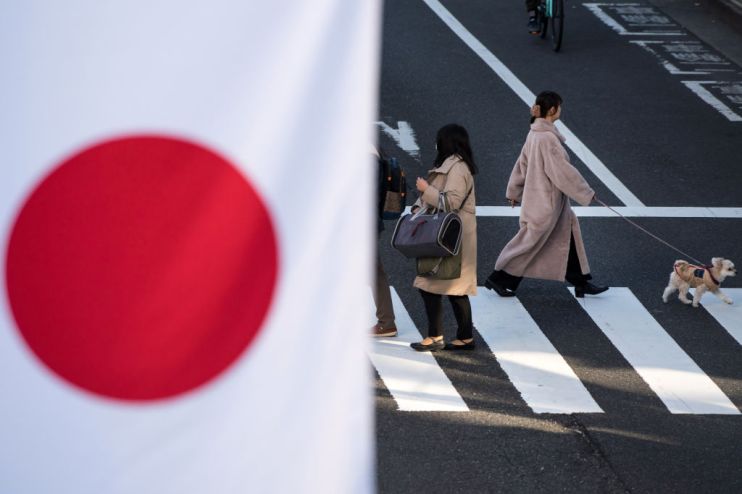Why investors will be paying close attention to the Bank of Japan in 2024

A long-awaited change in Japan’s monetary policy framework is one of the things that investors will be paying close attention to in 2024.
For decades, Japan has had ultra-loose monetary policy in a mostly unsuccessful attempt to stimulate its dormant economy.
Interest rates in Japan have been below zero since 2016 and have not been above one per cent this millennium.
Other forms of monetary experiments have also been tested. Yield curve control, where the central bank intervenes in the bond market in an attempt to target a certain level of interest rates, was introduced in 2016 after years of heavy quantitative easing.
The Bank of Japan now owns 70 per cent of all outstanding 5-year, and more than 80 per cent of outstanding 10-year, Japanese government bonds, according to the IMF.
However, investors are increasingly certain that change is coming sooner rather than later.
Inflation, which has been non-existent in Japan for much of the past thirty years, has climbed to 3.3 per cent. Underlying CPI inflation is predicted to slowly rise while inflation expectations have also climbed moderately.
In its last meeting of the year, the central bank confirmed that interest rates would remain in negative territory, but the Bank’s Governor said the economy was “steadily moving toward achieving stable two per cent inflation”.
Although no change has come yet, many traders expect that the BoJ will be emboldened to change course after the latest round of annual Shunto wage negotiations, which take place in the spring of next year.
Policymakers hope this will show more domestically driven inflation.
“These negotiations in the spring are key to achieving sustainable inflation – they don’t want to remain in deflation long term,” Finalto’s Neil Wilson said.
But after so many years of loose policy, changes to the monetary regime risk major financial dislocations.
The domestic danger is that Japanese investment funds face a situation not unlike the LDI crisis last autumn.
If the BoJ were to abandon yield curve control, yields would likely rise and bond prices would fall. Bond yields and prices move inversely.
Falling bond prices put investors at risk of insolvency, in some cases forcing them to dump assets in an attempt to shore up their position. But this only sends bond prices lower, starting a vicious circle.
Marcel Thieliant, head of Asia-Pacific at Capital Economics, argued that this was not a huge risk for Japanese pension funds because they only hold around five per cent of outstanding government bonds.
Insurance firms, however, are a “bigger fault line”, Thieliant warned. Insurance firms hold around 20 per cent of outstanding government debt, putting them at risk of insolvency if prices fell sharply. Insurers also hold fewer liquid assets, meaning they are more at risk from a fire sale.
While the domestic dangers are real, global investors are also worried about the possible spillover effects.
Low yields on offer in Japan have incentivised investors to turn to international markets. The IMF estimates that Japan’s portfolio of investment assets abroad reached $5trn in the fourth quarter of 2020—double its level before the global financial crisis.
This has been fuelled by investors’ ability to borrow cheaply in Japan, where rates are negative, and invest that capital in global markets.
“Cheaply borrowing in yen and investing in foreign assets has been easy money for those involved,” Gordon Shannon, portfolio manager at Twenty Four Asset Management said.
“But even just the anticipation of a less predictable BoJ will shake some participants out of the carry trade, again reducing the demand for foreign assets,” he continued.
If and when rates start rising in Japan, domestic investors will likely pull back somewhat from their international presence which could have a huge impact on financial stability at a time when there is already significant volatility in bond markets.
Japanese investors are the largest holders of US Treasuries outside the US. They are major holders of government bonds in most advanced economies, including around 10 per cent of Australian and Dutch debt.
They also have a significant presence in the UK, owning around five per cent of government debt and between one and two per cent of UK equities.
If Japanese investors change their behaviour meaningfully, already nervous markets could have a huge dose of uncertainty thrown in too.
International organisations have warned about the dangers this could have on the economy, particularly if changes are not clearly signalled to market participants.
“It is imperative they (the BoJ) clearly telegraph their intentions to avoid unwarranted volatility and mitigate spillovers in global financial markets,” the IMF warned back in April.
So pay close attention to the Bank of Japan in 2024.